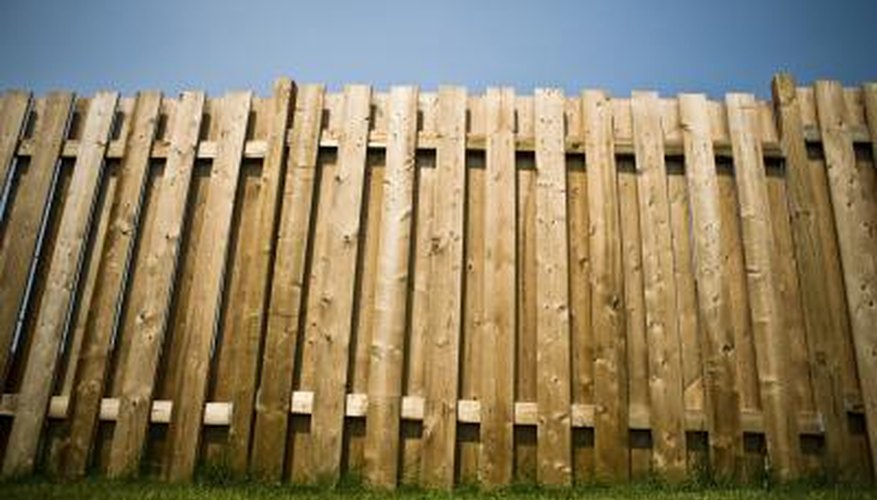Pea gravel is a common landscaping material because it is easy to with and cheap. Literally the size of green peas, this gravel is self-compacting, meaning it presses together to form a nearly solid mass. When building a retaining wall or garden border or setting fence posts, backfilling with pea gravel instead of sand, crushed limestone or other materials has benefits.
Facilitates Drainage
Proper drainage is a key element for a healthy landscape. Whether you're building a retaining wall on a slope or a border to prevent erosion in a garden, backfilling with pea gravel creates a barrier solid enough to hold soil. At half an inch to 1-inch thick, it fits into small spaces so that air pockets don't threaten structural integrity. Crevices between the small rocks allow excess water to escape, preventing standing water for mosquitoes. Pea gravel around the bases of fence posts reduces the potential of frost heave damage by expanding and contracting when the ground freezes.
- Proper drainage is a key element for a healthy landscape.
- Pea gravel around the bases of fence posts reduces the potential of frost heave damage by expanding and contracting when the ground freezes.
Weed Barrier
Encroaching weeds are a common problem around walkways, patios and gardens. Backfilling with pea gravel reduces maintenance by expanding the barrier between a structure and grass. When installing edging, always make the trench wide enough to accommodate the edging material plus 3 inches of pea gravel. A deep layer of pea gravel will block roots from developing beneath the structure. The top layer also will block the encroachment of weeds.
- Encroaching weeds are a common problem around walkways, patios and gardens.
- A deep layer of pea gravel will block roots from developing beneath the structure.
Low Maintenance
Unlike sand and other materials used for backfill, pea gravel does not erode as quickly. The top layer typically will need to be replenished every two to three years. Because pea gravel is long-lasting, it also prevents stones and bricks on a patio or walkway from rotating under foot traffic. Behind a timber or dry-stacked stone retaining wall, pea gravel also provides continuous support for a structure.
- Unlike sand and other materials used for backfill, pea gravel does not erode as quickly.
Considerations
If you decide to expand a garden or change the landscape, a large quantity of pea gravel will be difficult to remove from soil. You can shovel the top layers out, but over time it will get embedded in soil, especially if it wasn't originally laid over landscaping fabric. One alternative to removing the base layer of pea gravel is to mix it into the ground by turning over the soil several times. As inorganic matter, the rocks don't add nutrients or "good" bacteria into the soil, but they are small enough not to cause harm and improve the drainage of clay soil.
- If you decide to expand a garden or change the landscape, a large quantity of pea gravel will be difficult to remove from soil.
- You can shovel the top layers out, but over time it will get embedded in soil, especially if it wasn't originally laid over landscaping fabric.
